Corals rely on symbiotic algae to provide most of their food via photosynthesis. At the same time, the coral protects the algae within the tissues beneath its hard limestone skeleton, and exhales carbon dioxide that fuels further photosynthesis. Ocean warming threatens this ancient symbiotic cycle mainly by disturbing the algae species, which tend to be less heat tolerant than the coral itself.
A one-month spike in temperature of 1 or 2C above the typical maximum for a region can be enough to force coral to expel their algae symbionts – which also give coral most of their extraordinary colour. If such a bleaching event lasts too long, a coral may starve to death. In recent years, mass bleaching events have been increasing in regularity and severity. This is so concerning because coral reefs sustain a quarter of all marine life and the livelihoods of up to a billion people.
As for the corals living in the warming oceans, Dr Shelby McIlroy, research professor at Hong Kong University’s (HKU) Swire Institute of Marine Science (SWIMS), describes their remaining options as “move, adapt or die”.
80%
Movement is already happening. In Asia, corals have been going north. There are now coral communities off the Korean coast and in Tokyo Bay, both previously too cold for them to survive.
Associate Professor David Baker, a coral ecologist at SWIMS working with McIlroy, suggests that scientists in mainland China and Hong Kong are in the ideal position to assist corals in their migration, by physically moving them out of the warming tropical waters before it is too late.
“China is one of the few places on Earth with an extensive coastline that bridges the tropical and the temperate seas, and HKU is amongst a number of Chinese institutions with expertise in coral reef ecology. As climate change progresses, local and national authorities can work together to help accelerate the northern expansion of corals from the South China Sea,” Baker said.
Though China has lost 80% of its coral reefs since the 1950s, it is making concerted efforts to revive them.
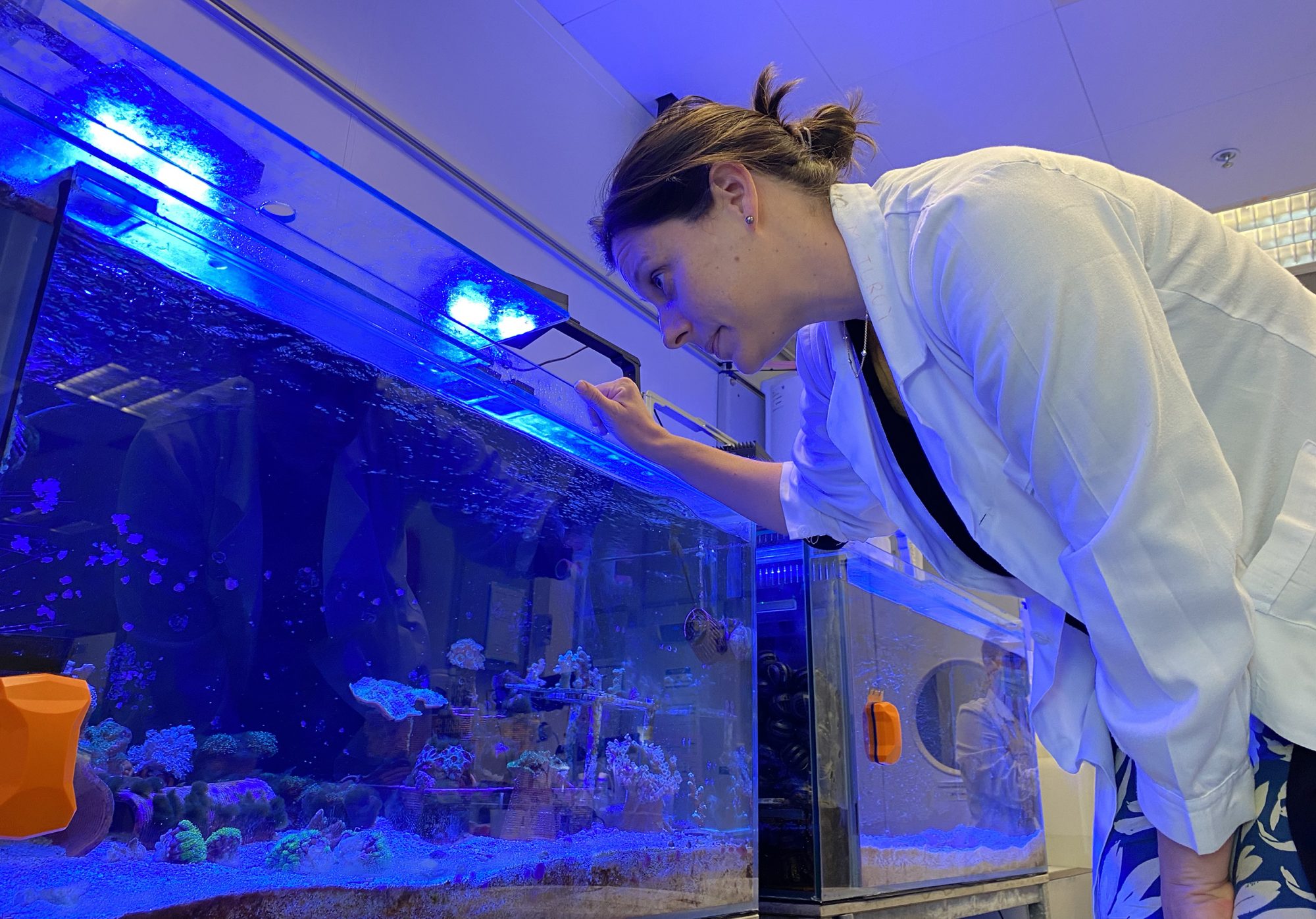
A role for ‘probiotics’?
Another option, says McIlroy, is selective breeding, also known as assisted evolution, to help corals adapt to rising temperatures. This is the same process that has given us our breeds of domestic cats, dogs and goldfish, not to mention most food crops. But corals grow and reproduce much slower than pets, and the tropical seas are warming fast. “Breeding corals to withstand higher temperatures may not leave us enough time,” says McIlroy.
A faster option, says McIlroy, may be the use of “probiotics” – adding cultures of more heat-tolerant symbiotic algae to the corals.
In the wild, algae are taken up from the surrounding sea water and different species can exist in the same body of coral. McIlroy’s team have found that rather than being neighbourly, these different species may “bully” each other while jostling for resources. Unfortunately for the corals, it is the algae that can withstand higher temperatures that are being “bullied”.
One of the main bullies is a species called Cladocopium goreaui. Under optimal temperatures, around 30C, this species suppresses other algae, including the more thermally tolerant Durusdinium trenchii.
McIlroy calls Durusdinium a “background” symbiont – under normal temperatures it accounts for only around 5% of the total algal biomass within a coral.
Unlike Durusdinium, Cladocopium cannot handle high temperatures. When they exceed 30C its growth slows, and Durusdinium emerges from the background, expanding in the tissues of coral and kickstarting it back to life. McIlroy calls it the “last man standing – Durusdinium pop up where everything else can’t be.”
The problem is that once the temperature has gone back down, Cladocopium returns and pushes Durusdinium back, deep into the tissues of coral, making it vulnerable to overheating again.
Targeting coral larvae
Can scientists enable coral to resist high temperatures by shifting the balance of its algae to thermally tolerant varieties like Durusdinium? Can this be done by “inoculating” coral with a culture of algae that will be able to withstand the “new normal” of higher temperatures?
McIlroy thinks this is doable: “Durusdinium are in lots of different corals and lots of different environments, and the idea of probiotics for corals is gaining traction. It was first suggested in 2006 by Israeli scientists, to combat coral diseases.”
But she warns that the process would not be as simple as just “dumping Durusdinium into the ocean over the reefs”. This is because the algal community in adult coral is hard to manipulate, so it is the coral larvae that should be seeded with probiotics.
“We must take advantage of the larval step, when they are most flexible in what algae they take up. This is the window – about 10 weeks – before one or another symbiont takes over. The window gets smaller when corals are adults. You can seed coral with algae early on, and then they are available to (adult) coral later,” she explains.

Once the coral has been seeded with the thermally tolerant algae, another challenge appears: maintaining the desired species ratio within the coral. It is still not known what factors affect the ratio, nor if coral itself can regulate it.
“We can get the algae in, but we do not know how to control their ratios and abundances. I think coral has some control over it, but there is not much direct evidence for it yet. This is something I will be looking at in the future using isotopically labelled food to see if the coral can feed one type of algae more than the other,” says McIlroy.
She goes on to explain it may be possible to target coral larvae in the wild, releasing thermally tolerant species of algae at the time of coral spawning.
But she thinks a better option is to collect the larvae and inoculate them in tanks, where they can then settle on artificial tiles and form colonies. Once these colonies have grown to a suitable size, the tiles and the coral can be transplanted to form new, thermally tolerant, ocean reefs.
SWIMS’ scientists are pioneers in coral restoration using 3D-printed clay tiles that are seeded with coral fragments of selected species, and then placed on the seabed. The tiles’ purpose-designed structure protects the coral seedlings from predators such as sea urchins. Last year, SWIMS launched a project funded and co-managed by Hong Kong’s Agriculture Fisheries and Conservation Department, placing 128 such tiles in the Hoi Ha Wan Marine Park.
The two methods could be blended, says McIlroy. In order not to depend on annual spawning events, “we can collect live coral fragments and bleach them in the lab, but not to death. Then we can add different kinds of algae to water and they start to repopulate the coral.” The inoculated fragments can then be seeded onto 3-D printed tiles and transplanted back into the sea.
Yet despite the potential of coral probiotics, McIlroy calls it a “band-aid”.
“The oceans continue to get hotter and hotter, and there will be a temperature maximum even for thermally tolerant symbionts. Unless we start to reverse the causes of climate change, in 50-100 years we will see a total collapse of coral ecosystems,” she warns.
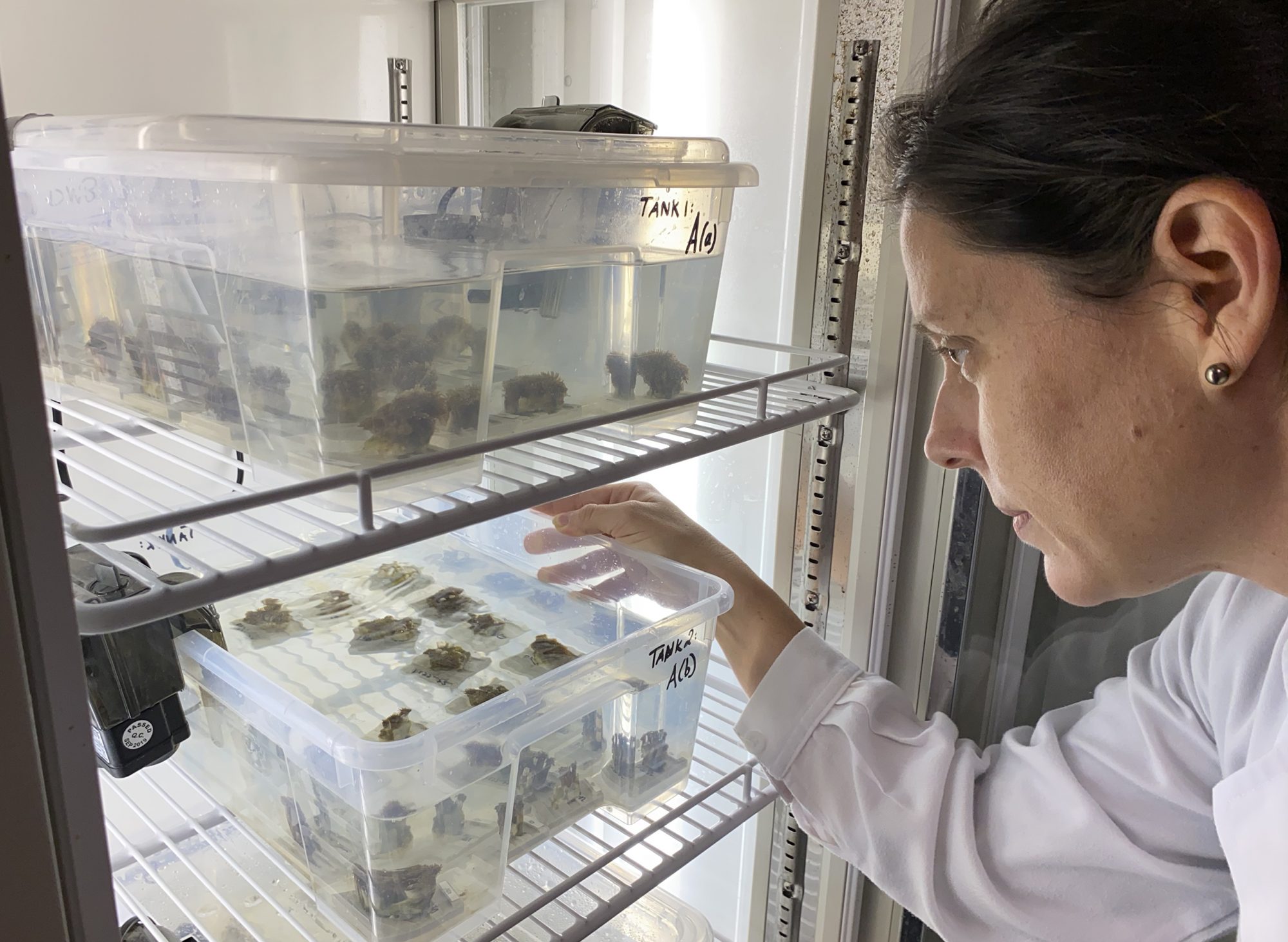
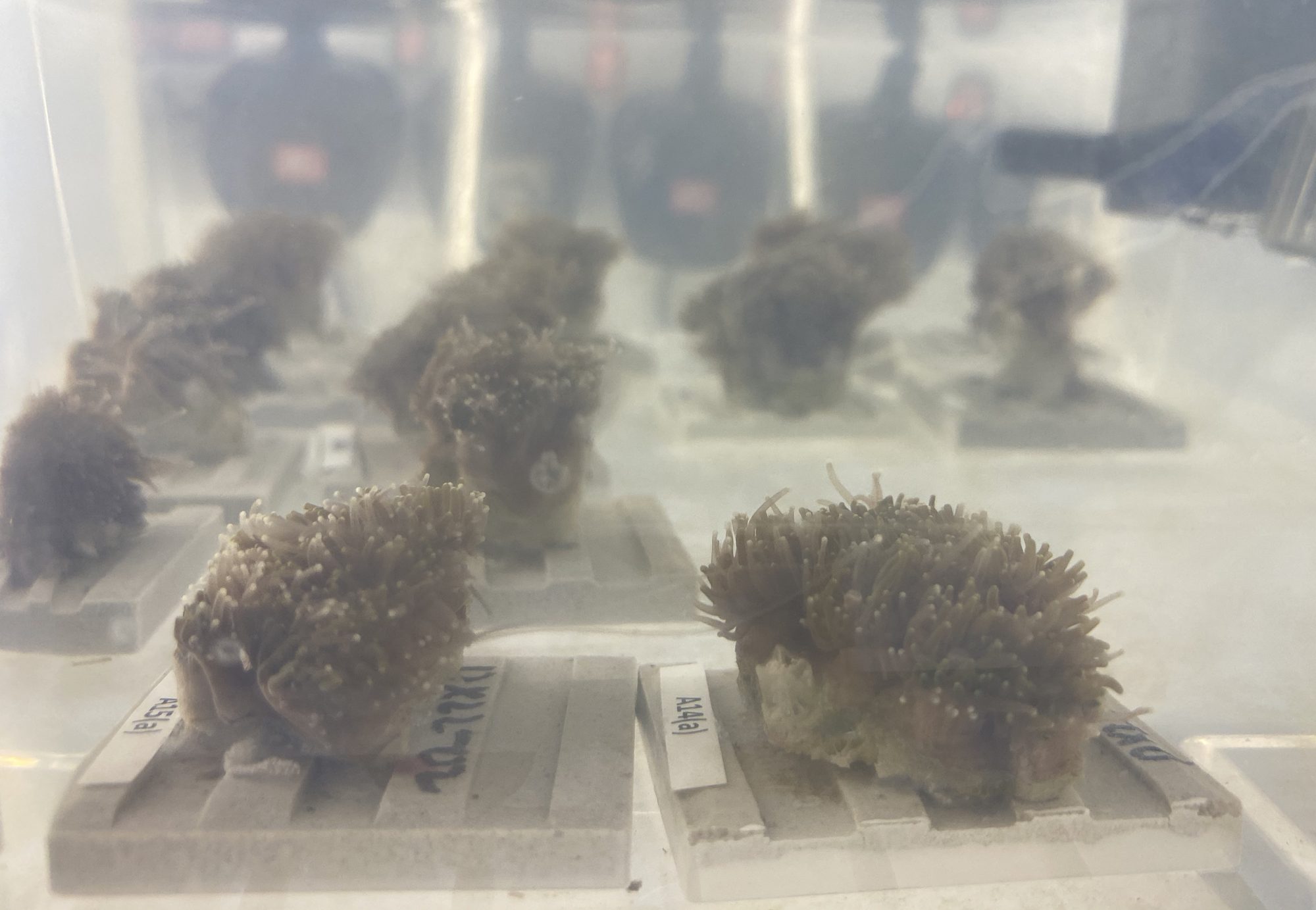

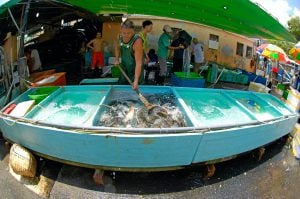

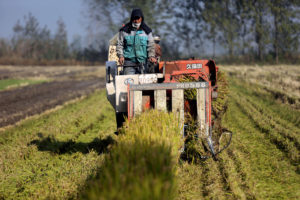
![The four person medical team at Kwaring village of Lahaul tests for Covid-19 during winter in the high Himalayas [Image by: Rakesh Parihar]](https://dialogue.earth/content/uploads/2021/02/Photo_5_Kwaring-2048x1375-1-300x201.jpg)

![Woman farmer carrying her child while cutting rice crops from the field, in village Qasim Solangi, Hyderabad [image by: Manoj Genani]](https://dialogue.earth/content/uploads/2021/02/Women-peasant-carrying-her-child-while-cutting-rice-crops-from-the-field-in-village-Qasim-Solangi-Hyd-2048x1365-1-300x200.jpg)
